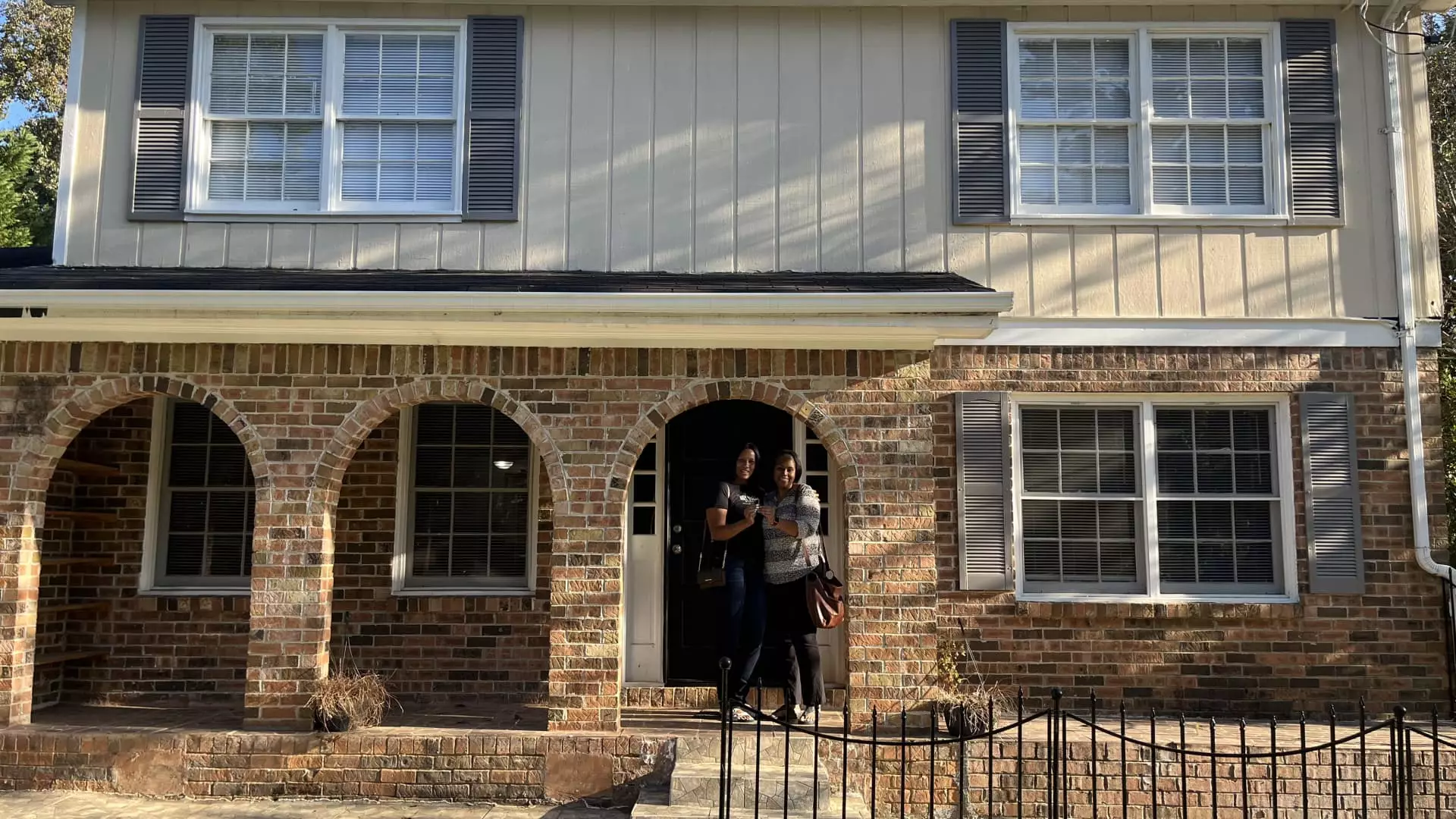As the American dream of homeownership becomes increasingly elusive, many renters are grappling with rising costs that continually outpace their earnings. One poignant example is the story of When Will Hunnicutt, a 30-year-old social worker from Atlanta. Hunnicutt’s experience highlights a broader trend affecting countless individuals and families in major urban areas across the United States. Searching for an affordable apartment in Atlanta, he faced daunting rent prices often demanding incomes that he and many others simply did not earn. With typical leases reaching as high as $3,000 per month, the burdensome requirement of making three-and-a-half times the monthly rent leaves numerous potential renters disheartened and deterred.
Amidst his struggles, Hunnicutt discovered a unique rental model through Roots, a real estate investment trust (REIT) dedicated to facilitating a pathway to homeownership. With this innovative approach, renters can invest their security deposits, earning returns while fostering a sense of ownership even before purchasing a home. This model stands as a beacon of hope amid a sea of high costs and application rejections, but it also raises essential questions regarding affordability and the future of equitable homeownership.
The alarming reality of the housing market is starkly evident; to purchase a typical home in the U.S., prospective buyers would need to earn around $113,520 annually. This figure is a staggering 35% above the average income of U.S. households, showcasing a disconnect between earnings and housing costs. For many individuals, including Hunnicutt, the dream of homeownership becomes more like a mirage – perpetually out of reach despite earnest efforts to save for a down payment.
A critical report by CNBC highlights that nearly 40% of non-homeowners cite insufficient savings for a down payment as their primary barrier to purchasing a home. These statistics reveal a glaring flaw in the housing system, where income growth fails to keep pace with escalating home prices. For aspiring buyers, especially first-timers, navigating this financial landscape can feel overwhelming.
In light of these formidable challenges, down payment assistance programs offer potential lifelines to those striving for homeownership. These initiatives come in various forms, provided by state agencies, local governments, non-profits, and financial institutions. While many of these programs target first-time homebuyers or individuals meeting specific income criteria, they vary widely in availability and application requirements across different regions.
Some programs, like those run by Alternatives Federal Credit Union or the Chicago Housing Authority, can provide crucial support ranging from $9,000 to $20,000. This financial assistance is particularly valuable for those without familial support systems, as many prospective buyers lack the familial safety net that can help with down payments.
Nikitra Bailey, an executive with the National Fair Housing Alliance, points out systemic inequalities that hinder equitable access to these programs. Black Americans, who have faced decades of discriminatory practices such as redlining and predatory lending, are often at a disadvantage. Thus, targeted programs that focus on first-generation homebuyers can serve a dual purpose: offering necessary financial support while also addressing long-standing inequities in the housing market.
Despite the daunting landscape of saving for a down payment, many first-time homebuyers mistakenly believe they must put down 20% of the total purchase price to obtain a mortgage. According to research by the National Association of Realtors, the actual average down payment for first-time buyers is much lower, often around 8%. Several lending options even allow for down payments as low as 3.5% or, in some cases, 0%.
While lower down payments open doors to homeownership, buyers must also consider potential costs associated with private mortgage insurance (PMI)—a necessary expenditure for those unable to meet the typical down payment threshold. Experts encourage prospective buyers not to overlook the long-term implications of their financial decisions in this area.
Although initiatives like Roots provide innovative avenues to wealth-building through rental agreements, experts consistently advocate for prudent financial planning in the lead-up to homeownership. Those planning to purchase a home within the next few years are often advised to utilize low-risk savings options such as high-yield savings accounts, certificates of deposit, or Treasury bills rather than risky market investments.
The importance of preserving retirement funds also cannot be overstated. Many financial advisors recommend against tapping into 401(k) plans for home purchases, unless absolutely necessary, urging individuals to prioritize long-term financial security.
The road to homeownership is fraught with challenges and systemic barriers. However, evolving financial solutions, ranging from innovative REITs like Roots to targeted assistance programs, hold promise. By gradually dismantling misconceptions regarding down payments and advocating for equitable access to financial support, we can foster an environment where the American dream of homeownership remains viable for all.

Leave a Reply